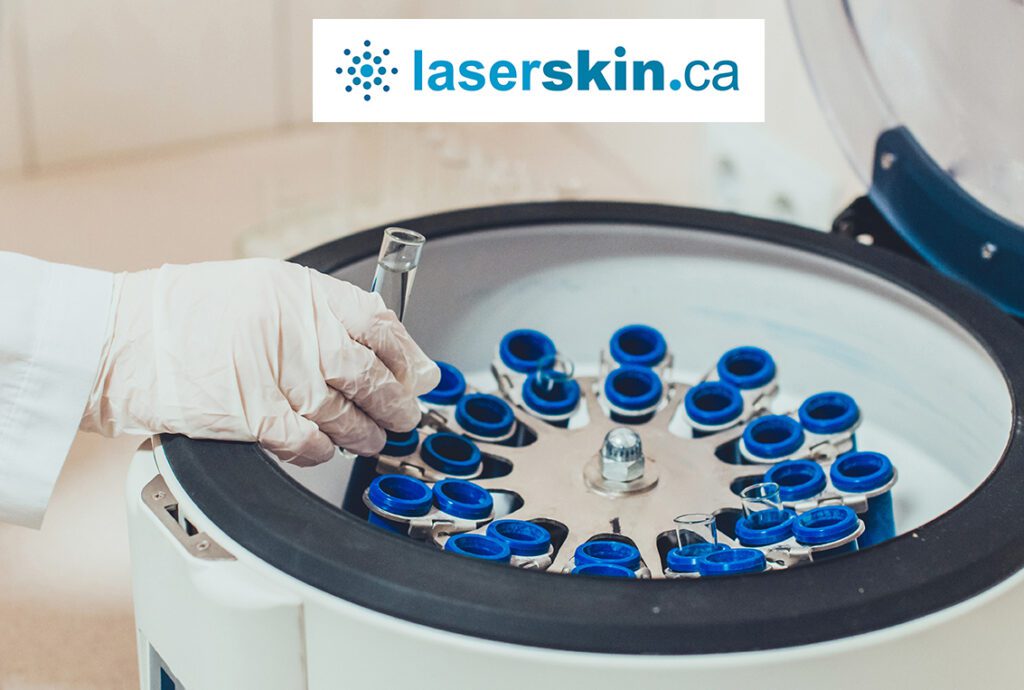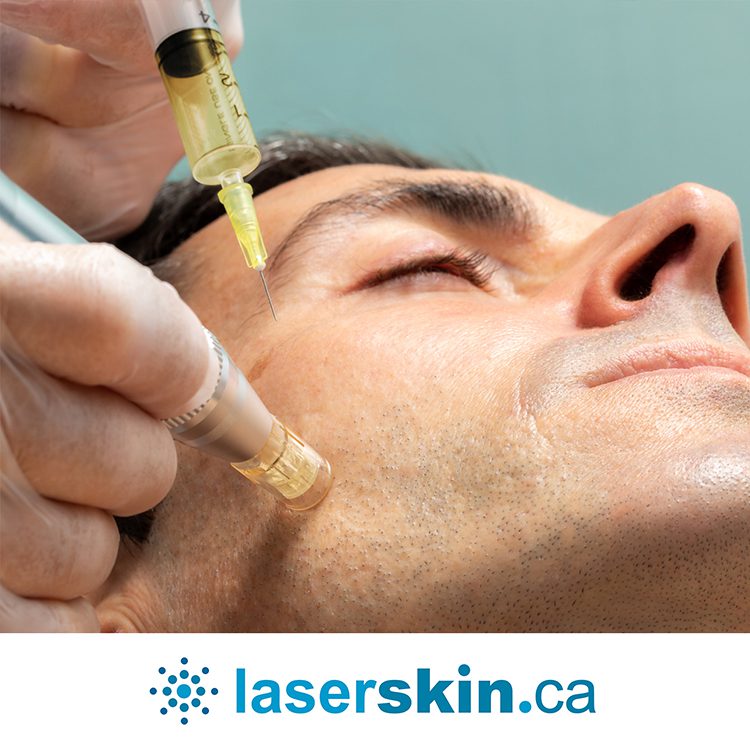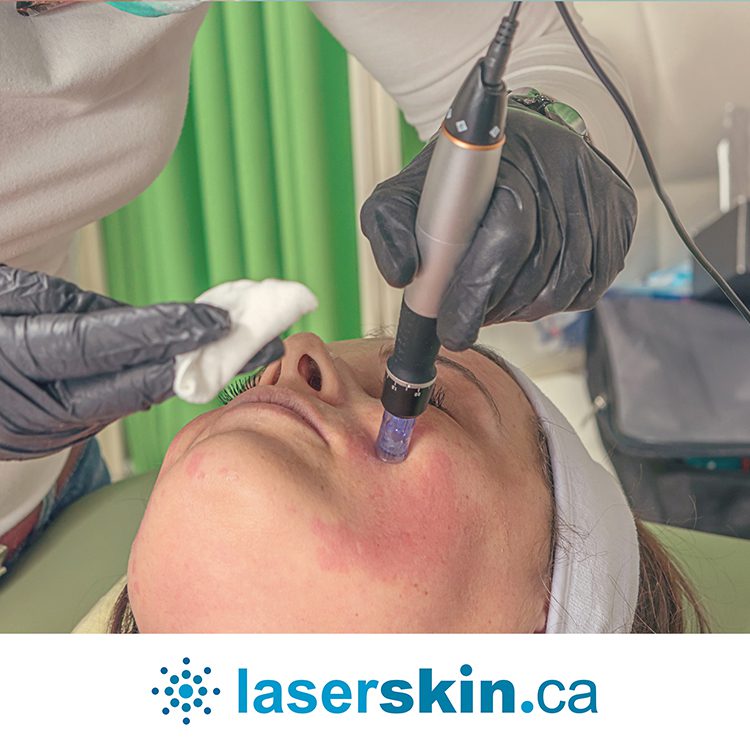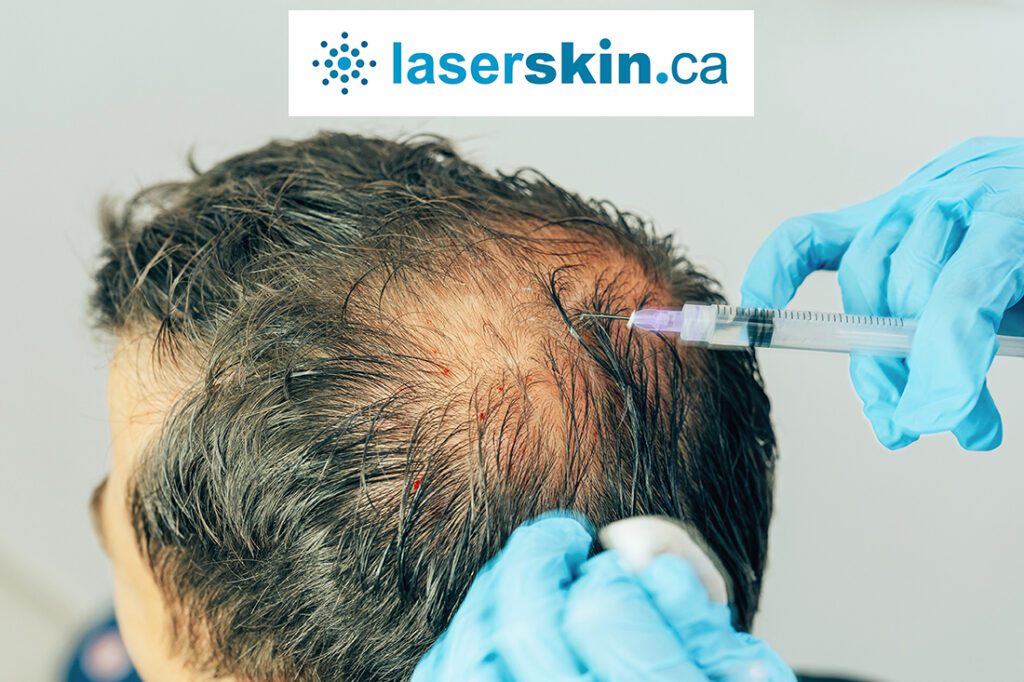Revitalize Your Skin and Hair with PRP Treatment
Introduction
Platelet-rich plasma therapy, called PRP treatment, leverages the body’s innate healing mechanisms to expedite recovery. Blood is drawn from the patient and then processed in a centrifuge to segregate plasma, enriched with platelets and growth factors, from the accompanying red and white blood cells. These concentrated platelets are then reintroduced into target areas—a torn tendon, tennis elbow, rotator cuff, or conditions like hair loss—through injections. PRP therapy has long been utilized to assist in wound healing. It has recently gained traction for use in cosmetic procedures, including PRP face treatment and the treatment of sports injuries. Side effects are minimal, often limited to redness, swelling, or bruising at the injection site. Therefore, PRP therapy remains a safe and effective treatment option for speeding up the healing process, whether tissue damage or specific injuries.
What is PRP Treatment?
PRP is a regenerative therapy that uses a patient’s platelets. It helps heal injured tissues and organs. Examples of applications include skin repair and hair regrowth.
A modern medical treatment is being employed which involves the utilization of a person’s platelets to help in the curing of damaged body parts, ranging from skin rehabilitation to hair regrowth.
Injections of the newly developed, biotech-enhanced platelets can be used to boost tissue regeneration in damaged ligaments, joints, and tendons. This has been found to have positive effects on hair regrowth, halting hair loss, and improving the appearance of scars, as well as providing facial rejuvenation.
For over two decades, PRP has been employed for a variety of purposes in the fields of periodontal therapy, orthopedics, and sports medicine. In recent times, its utilization in dermatology has grown in popularity. Hair and skin businesses have observed the advantages of PRP in healing wounds, diminishing acne scars, restoring skin vitality, fat grafting, and stimulating hair growth.
In a normal blood sample, the majority of the composition is made up of red blood cells at 93%. The remainder of the sample is made up of 6% platelets and 1% white blood cells. When the blood undergoes centrifugation, the majority of the red blood cells are removed and the composition of the plasma is then 94% platelets and 6% red blood cells, known as platelet-rich plasma (PRP).
The presence of a high number of growth factors and cytokines in the body can help to restore and heal tissue. A platelet count of around one million platelets per microliter, which is five times more than the normal amount, can significantly improve the healing of wounds and the repair of tissue.
Platelets contain a variety of proteins and when released, they can affect many processes, including stem cell activity. In addition to platelets, PRP also consists of fibrinogen and leukocytes, which together with growth factors, are thought to be the source of many of its benefits.




PRP Treatment For Hair Loss
Research has revealed that PRP therapy is beneficial in treating androgenetic alopecia. This technique requires injecting PRP into the scalp with a micro-needling tool. The growth factors in PRP aid in sustaining hair follicles and preserving the active period of the hair cycle.
The average amount of hair, size of hair follicles, and proportion of terminal to vellus hairs all saw notable improvement, and most of the trial participants were content with the results. LEARN MORE ABOUT PRP TREATMENT FOR HAIR LOSS
PRP Therapy for Vampire Facial
In the realm of dermatology, the use of Platelet Rich Plasma (PRP) therapy has seen a surge in popularity over the past few years, owing to its effectiveness in reducing the appearance of wrinkles, surgical scarring, skin tears, stretch marks and acne scars. Thanks to the influence of Kim Kardashian, the process of rejuvenating facial cells through PRP has become increasingly sought-after.
In 2013, the “vampire facial” gained popularity on Instagram due to a photo of Kim Kardashian with a bloody face. This prompted her followers to ask what this strange new skincare technique was.
Book Your Free Consultation Today Or Call (647) 560-9233
Q & A
What is PRP?
PRP stands for Platelet-Rich Plasma, which is a substance derived from the patient’s own blood. It is prepared by taking a small blood sample from the patient’s arm and using equipment to separate the plasma, which contains a higher concentration of platelets and various growth factors, from other types of blood cells. PRP has been used to treat various conditions, including knee osteoarthritis, stress-related hair loss, and proliferative diabetic retinopathy.
How long will PRP injections last?
PRP lasts anywhere from six to nine months, which will continue to aid in healing the soft-tissue injury.
Is PRP covered in Ontario?
How Much Does PRP Injection Therapy Cost? PRP is not covered by OHIP. An injection of PRP is $950-1200, depending on the injection site and whether ultrasound is necessary during the procedure. At Laser Skin Clinic, our PRP cost ranges between $397-$597, depending on your package. We do PRP mainly for hair loss and skin rejuvenation treatments.
What are the risks of PRP?
Because PRP is derived from your blood (“autologous” transplantation), there is no chance of having an allergy or immune reaction. Indeed in the literature, side effects or complications of PRP injection are extremely rare. The main risks include local infection (< 1% chance) and pain at the injection site.
Is PRP worth the money?
Although it is not as effective as hair transplants, and you can combine treatments like Propecia and Rogaine, PRP is an effective treatment for androgenic alopecia. This goes for both, whether male-pattern hair loss or female-pattern hair loss.
Is 1 PRP session enough?
We recommend that to enhance the success rate of the PRP treatment, patients should undergo about three to six distinctive sessions, each positioned every month. After this, patients should undergo a single effective therapy every 3-6 months to sustain the therapy effects for longer.
How does PRP work?
PRP works by promoting cell growth and increasing the concentration of growth factors in the affected area. The preparation of PRP is done by centrifuging the patient’s own blood at a high speed to separate the plasma, which contains bioactive proteins and cell adhesion molecules. The resulting PRP is then injected into the injured or affected area to promote healing and tissue regeneration.
What is the preparation of PRP?
The preparation of PRP involves taking a small blood sample from the patient’s arm and using equipment to separate the plasma, which contains a higher concentration of platelets and various growth factors, from other types of blood cells. The blood draw is followed by a second spin at a high speed to increase the concentration of platelets in the plasma. The final product is a concentrated solution of platelets and growth factors that can be injected into the treatment area.
What conditions can be treated with PRP?
PRP has been used to treat various conditions, including knee osteoarthritis, stress-related hair loss, and proliferative diabetic retinopathy. There is little evidence to support its effectiveness for other conditions, and further studies are needed to determine its potential uses.
What is the effectiveness of PRP?
The effectiveness of PRP varies depending on the condition being treated and the individual’s response to the treatment. There is some scientific evidence to support its use in certain cases, such as knee osteoarthritis and stress-related hair loss, but more studies are needed to determine its effectiveness for other conditions.
Who can perform PRP treatment?
PRP treatment can be performed by a physician or a board-certified dermatologist who has received specific training in the procedure. It is important to choose a qualified health care provider who has experience and expertise in performing PRP to ensure the best possible outcomes.
What is the entire procedure for PRP treatment?
The entire procedure for PRP treatment involves taking a small blood sample from the patient’s arm, preparing the PRP by separating the plasma and increasing the concentration of platelets, and then injecting the PRP into the affected area. The procedure typically involves the use of a local anesthetic to reduce pain and discomfort, and patients can usually resume normal activities shortly after the treatment.
What are the possible risks of PRP?
The risks associated with PRP are minimal, as it involves using the patient’s own cells and substances. However, there is a small risk of infection, bleeding, and blood clots at the injection site. It is important to discuss any concerns with the physician or health care provider before undergoing the procedure.
Does PRP work for all types of hair loss?
There is some evidence to suggest that PRP may be effective in treating certain types of hair loss, such as stress-related hair loss. However, more studies are needed to determine its effectiveness for other types of hair loss.
Are there any insurance plans that cover PRP treatment?
Some insurance plans may cover PRP treatment for certain conditions, such as knee osteoarthritis. However, coverage varies depending on the insurance plan and the specific condition being treated. It is important to check with the insurance provider to determine if PRP treatment is covered under the plan and what the coverage entails.
Can PRP be used to treat soft tissue injuries?
Yes, PRP can be used to treat soft tissue injuries by promoting cell growth and tissue regeneration. It has been used to treat injuries such as muscle strains and tears, as well as tendinopathies and ligament injuries, such as anterior cruciate ligament (ACL) tears.
Are there famous athletes who have used PRP treatment?
Yes, there are several famous athletes who have used PRP treatment to aid in their recovery from injuries. Examples include Tiger Woods and Kobe Bryant, who have both reportedly undergone PRP treatment for knee injuries.
Is PRP approved by Health Canada or the Food and Drug Administration (FDA)?
A: PRP is considered a medical procedure rather than a drug and is therefore not subject to approval by Health Canada or the FDA. However, the equipment and substances used in the preparation of PRP are subject to regulatory standards.
What role does hyaluronic acid play in PRP treatment?
Hyaluronic acid is a substance that is naturally found in the body and is often used in combination with PRP treatment to enhance its effectiveness. Hyaluronic acid acts as a lubricant and helps to improve blood flow to the affected area, promoting cell growth and tissue regeneration.
Is there scientific evidence to support the use of PRP for various conditions?
There is some scientific evidence to support the use of PRP for certain conditions, such as knee osteoarthritis and stress-related hair loss. However, more studies are needed to determine its effectiveness for other conditions.
Can PRP be used in combination with other treatments?
Yes, PRP can be used in combination with other treatments, such as physical therapy or medications, to enhance its effectiveness. It is important to discuss any concerns or questions with the physician or health care provider before undergoing any combination treatment.
How long does PRP treatment take to show results?
The time it takes for PRP treatment to show results varies depending on the condition being treated and the individual’s response to the treatment. Some people may experience improvement within a few weeks, while others may take a longer time to see results. It is important to discuss the expected timeframe with the physician or health care provider before undergoing the treatment.
PRP Injection Cost
PRP (Platelet-Rich Plasma) hair treatment has gained significant popularity in Canada due to its promising results in combating hair loss and promoting hair regrowth. When it comes to the cost of PRP hair treatment in Canada, it can vary depending on different factors, such as the location and reputation of the clinic, the expertise of the medical professional administering the treatment, and the number of sessions required. In Toronto, for instance, the average cost of a PRP injection for hair loss can range from around $500 to $1,500 per session, with prices potentially higher in renowned clinics or when additional treatments are combined. For individuals residing in Richmond Hill, there are several reputable clinics that offer PRP treatments for hair loss, and the cost may be similar to that in Toronto. It’s important to note that the price of PRP hair treatment can be influenced by the specific clinic’s facilities, equipment, and the level of experience and expertise of the medical practitioners. It is always advisable to consult with a qualified healthcare professional in the Toronto or Richmond Hill area to discuss your hair loss concerns and get accurate information regarding the cost and effectiveness of PRP injections in your particular case.
Conclusion
When contemplating PRP therapy, the Laser Skin Clinic & Trichology Centre in Toronto emerges as a distinguished provider, offering expert PRP injection treatments for various health issues. The clinic boasts a team of adept doctors who deliver detailed consultations, laying out the treatment framework inclusive of potential risks. For those seeking evidence of effectiveness, a wealth of resources is available to showcase the benefits of stress-induced hair loss and knee osteoarthritis. PRP therapy administered here aims to catalyze cellular renewal and tissue healing, thanks to the growth factors present in the PRP concoction. Results timelines may vary, hinging on individual conditions and targeted cell types, but the clinic prides itself on tailor-made treatment strategies to enhance patient outcomes.
For individuals keen on understanding the financial commitment, information on ‘how much does PRP cost in Canada,’ ‘PRP injection cost Ontario,’ ‘PRP hair treatment cost in Canada,’ and specifically ‘PRP injection cost in Toronto’ is accessible and transparent. Expanding its reach, the clinic’s services also cover ‘PRP Richmond Hill’ and beyond, allowing for a wider patient demographic to access their specialized care.

